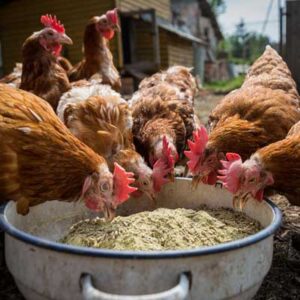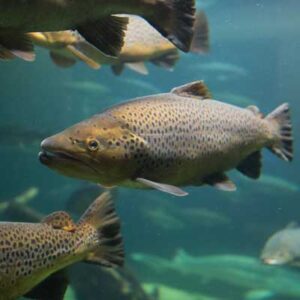Feed
Animal feed is a complex food product composed predominantly of raw agricultural ingredients such as forage like hay and alfalfa and partially refined ingredients like soy bean meal, cracked corn kernels and wheat middlings. The relative quantities of these ingredients vary with location, season, species being fed and the cost of the ingredient.
Animals are not capable of digesting all the plant matter they consume due to a number of factors; low levels of some digestive enzymes, short residence time of the food in the digestive system or the lack of specific enzymes.
The purpose of adding enzymes to feed is to improve the utilization of the feed, increasing the amount of nutrients available to the animals which improves their health, lowers feed cost for the farmers and reduces farm waste volume. The benefit to the consumer has been lower prices for meat in the supermarket and restaurants relative to 50 years ago.
Let’s explore more feed applications:
Phytase
Adding phytase catalyzes the removal of phosphate from phytic acid present in monogastric animal feeds such as corn and soybean meal. This reaction frees up phosphorus (P) that can be absorbed and utilized by the animals for bone development, energy utilization, and protein synthesis. As a result, inorganic P does not need to be supplemented into animal feed which has drastically reduced the inorganic P added to monogastric diets.


Carbohydrases
Carbohydrases comprise a large family of enzymes that break down carbohydrates (starch and dietary fiber) found in animal food, and are typically used in poultry and swine diets. Examples include:
- Xylanase and glucanase- break down non-starch polysaccharides found in cereal grains (wheat, barley or corn).
- Beta-mannanase- degrades the anti-nutritive beta-galactomannans present in soybean and corn meal.
- Amylases- hydrolyzes starch to simple sugars, increasing the available energy to the animal.
Lipases
Lipases are enzymes that break down triglycerides (fats) into free fatty acids and glycerol. Lipases can be supplemented to monogastric animals (poultry and pigs) to digest added fat or fat already present in the feed matrix. They are often used in combination with amylase and protease to maximize overall energy and amino acid availability from feed substrates like corn.


Proteases
Proteases are enzymes which break down proteins and peptides in animal feed. Excess protein in animal feed has been linked to higher nitrogen (N) in the manure.
